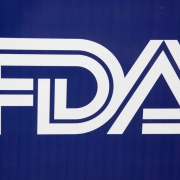Travere anticipates 3-Month PDUFA setback for IgA nephropathy treatment
Travere anticipates 3-Month PDUFA setback for IgA nephropathy treatment
Published: Oct 14, 2022
By Tristan Manalac
BioSpace
The FDA is likely to push back the Prescription Drug User Fee Act target action date for Travere Therapeutics’ sparsentan by three months, the company announced Thursday.
Sparsentan’s new drug application was supposed to receive a verdict on Nov. 17, but during the late-cycle review, the FDA asked Travere to include liver monitoring in its Risk Evaluation Monitoring Strategy (REMS), as is common for other submissions in the same drug class.
Though the San Diego, CA-based company plans to update its submission in the coming days, feedback from the regulatory agency suggests the amendments are likely to be considered major. This would mean that the FDA will need to push back the PDUFA date to give it ample time to review the additional information. Travere estimates the new action date will be on or around Feb. 17, 2023.
In a conference call Thursday afternoon, Jula Inrig, M.D., chief medical officer at Travere, explained to investors that the FDA’s request to adjust sparsentan’s REMS stems from a few asymptomatic cases of liver enzyme elevations, suggesting that there is a risk of liver injury associated with the candidate.
“The FDA indicated that because serious drug-induced liver injury has been seen with other members of the ERA class, and sparsentan’s database is currently limited to what is available via the accelerated approval pathway, the REMS to monitor liver function is warranted,” Inrig said. “The FDA has also noted in our interactions that there’s added caution given that [this would be] the first time nephrologists would be using this class of medicine.”
Still, Travere stands by the safety of sparsentan, pointing out that aside from the asymptomatic elevations in the AST and ALT enzymes, the candidate has shown a favorable tolerability profile overall.
“Importantly, to date, in our sparsentan program, we have not seen elevations in bilirubin,” Inrig continued. “There have been no reported clinical diagnoses of sparsentan-related liver injury. And in the few cases with asymptomatic AST/ALT elevation, there’s been no evidence of abnormal liver function.” A dose-response effect between sparsentan and AST/ALT elevation has also yet to be detected.
Accordingly, the FDA has not indicated any need for additional clinical data or studies of sparsentan, and the requested amendment is solely to update the candidate’s REMS. The regulatory body has also told Travere that it is open to modifying the REMS if data from the ongoing sparsentan program support doing so.
Sparsentan is Travere’s candidate for the rare disease IgA nephropathy, which occurs when IgA accumulates in the kidneys, interfering with the organ’s otherwise normal filtering functions. Symptoms include blood and protein in the urine.
The investigational compound is a dual endothelin angiotensin receptor antagonist and works by targeting both the endothelin A receptor and the angiotensin II subtype 1 receptor. In pre-clinical studies, blocking both pathways has shown promise in reducing proteinuria and preventing glomerulosclerosis in rare chronic kidney diseases.
Travere submitted its NDA for sparsentan in IgA nephropathy in March, buttressed by promising data from the ongoing Phase III PROTECT study, a randomized and active controlled trial with over 400 participants. The application was accepted in May.
In August 2021, the company revealed topline data from PROTECT, showing that sparsentan nearly halved proteinuria after 36 weeks, an effect that was more than three times stronger than the active comparator Bristol Myers Squibb’s Avapro (irbesartan).
Source: BioSpace






 Reuters
Reuters Reuters
Reuters

